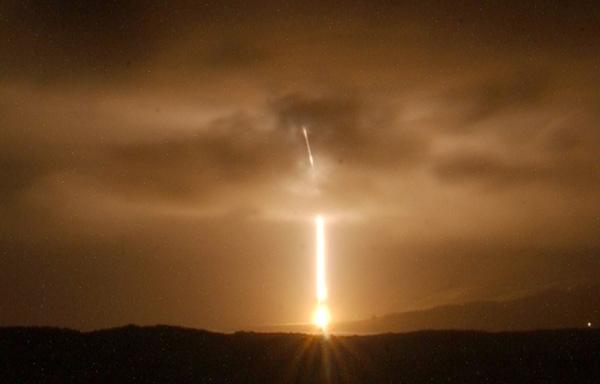Commander, Navy Region Europe, Africa, Southwest Asia (CNREURAFSWA) established Naval Support Facility (NSF) Deveselu Friday, Oct. 10, during an establishment and assumption of command ceremony on base.
NSF Deveselu, formerly a disused Romanian airfield, is the first Navy base to be established since Naval Station (NS) Everett in Washington, whose official groundbreaking ceremony was held Nov. 9, 1987.
The installation, scheduled to be operational in 2015, will be part of a NATO’s overall ballistic missile defense (BMD) system.
Rear Adm. John Scorby, commander, Navy Region Europe, Africa, Southwest Asia, hosted the ceremony.
“This is a historic occasion because ballistic missile threats to the U.S. and our allies are real and growing,” Scorby said. “Fortunately, NATO’s capabilities and defenses against these threats are also real and growing.”
Originally proposed in 2000 by then President George W. Bush, this BDM system, or shield, named the “Aegis Ashore System,” is a response by the NATO military alliance to increasing threats posed by the amalgamation of intercontinental ballistic missiles in the Middle East.
Today the Aegis BMD system is the key component in the Obama administration’s plan for a phased deployment of a missile defense umbrella in Europe, which is intended to protect U.S. forces and NATO allies from regional threats.
“Naval Support Facility Deveselu will be a crucial component in expanding the effectiveness of NATO’s overall ballistic missile defense system,” Scorby said. “It will also address the threat posed by short and intermediate range ballistic missiles to U.S., European and Allied personnel and assets throughout the region.”
The first of two proposed newly established bases, NSF Deveselu will utilize both a SM-3 missile interceptor battery platform and an Aegis SPY-1 radar platform. The U.S. government said the SM-3 missiles will have no offensive capability and only target incoming ballistic missiles launched by hostile countries.
Capt. Bill Garren assumed duties as the first commanding officer of NSF Deveselu.
“It’s an honor to be here and have the opportunity to work with this international team of dedicated professional who are building the future of ballistic missile defense in Europe,” said Garren. “We have a lot of work ahead of us but our future success rests on the shoulders of this outstanding United States/Romania team. So, we have all we need to excel.”
The land-based ballistic missile defense system in Romania will be almost identical to that used on Navy Aegis-capable guided-missile destroyers and cruisers. It’s designed to detect, track, engage and destroy ballistic missiles in flight.
Also contributing to the BMD system, are the Forward Deployed Naval Forces in Rota, Spain. The forward deployed Arleigh Burke-class guided-missile destroyers USS Donald Cook (DDG 75) and USS Ross (DDG 71) are the first of four Aegis BMD warships scheduled to be based in Spain to bolster the defense system.
To further the scope and reach of protection of the region’s defense, a Navy base, nearly identical to NSF Deveselu, will be established in Poland.
“No single nation can combat global threats alone,” Scorby said. “We must collectively share information, share experiences and work together for regional stability. U.S., NATO, and European allies stand united in maintaining a Europe that is safe, secure and prosperous.”
NSF Deveselu sits on about 430 acres. The site will consist of a fire-control radar deckhouse with an associated Aegis command, control and communications suite. Separately, it will house several launch modules containing SM-3 missiles and be manned by about 200 U.S. military personnel, government civilians and support contractors.










